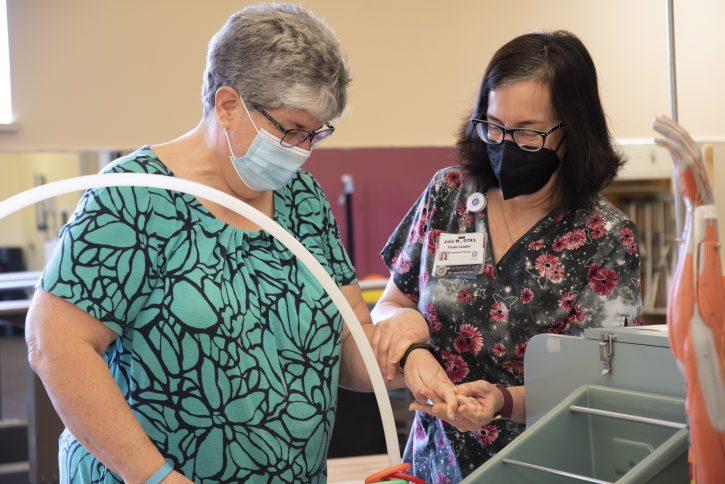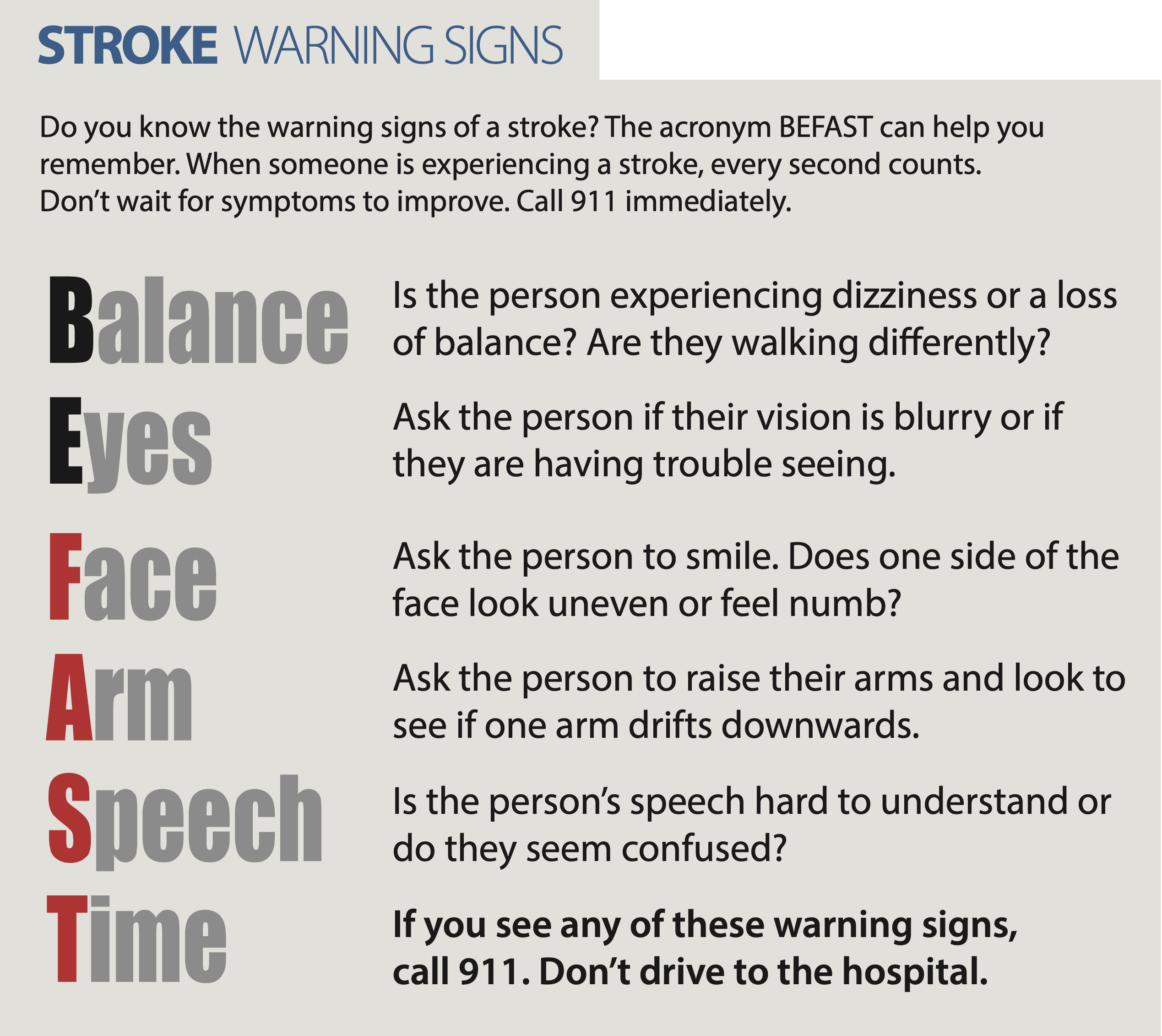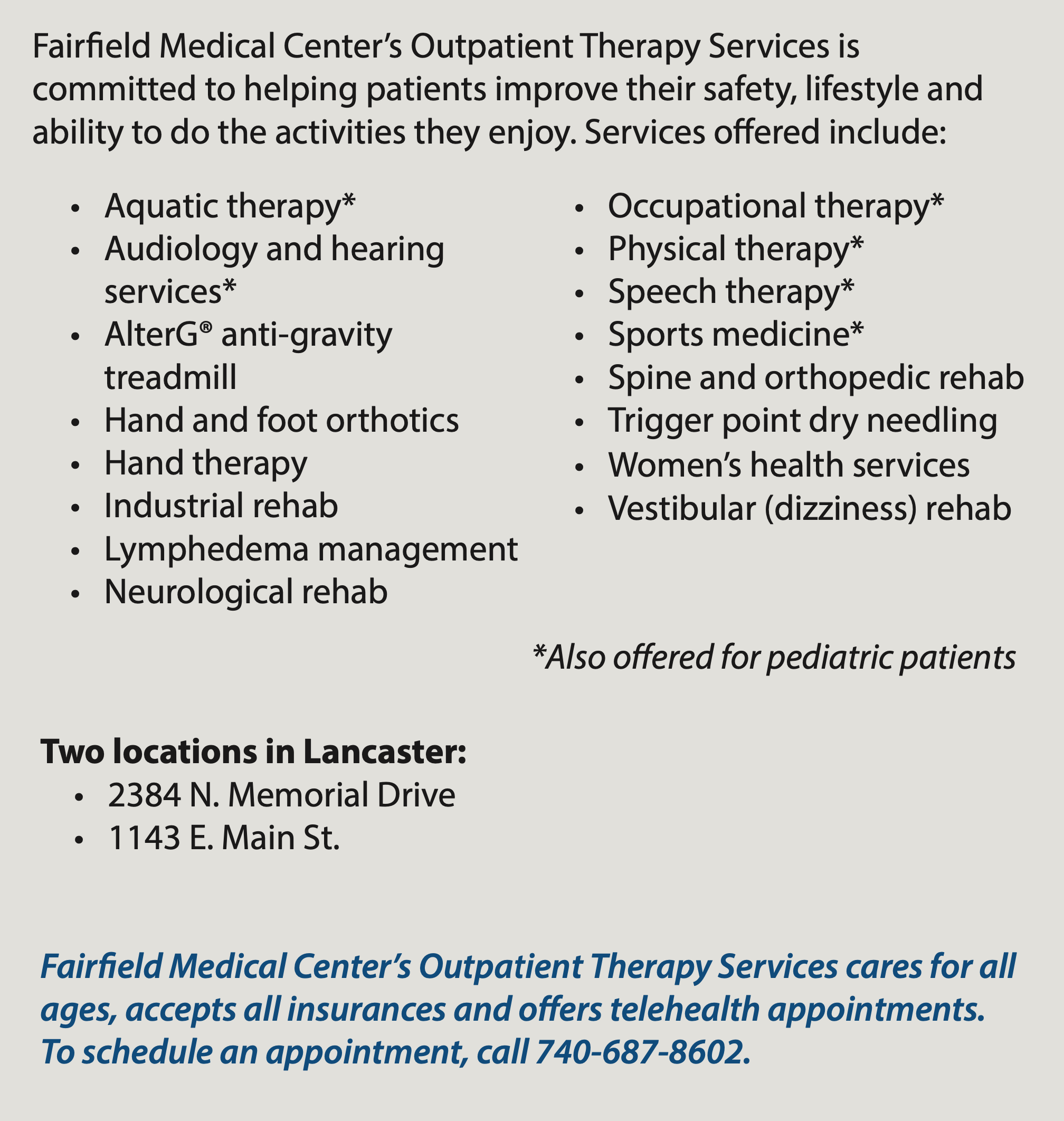
Article originally published Spring 2022 in The Monitor magazine.
A sudden feeling of fatigue – that was the first and only warning sign Terri Garrett experienced hours before she suffered a debilitating stroke in the middle of the night.
It was Oct. 7, 2013, and Terri, then 49, had just come from a fun evening at the Fairfield County Fair with her family when she was hit with an overwhelming feeling of exhaustion. Shortly after 9 p.m., she was ready to turn in for the night.
“I usually stay up much later than that, so my husband asked if I was feeling alright,” Terri said. “I brushed it off thinking it was due to all of the walking around we had done that day.”
Three hours later, a feeling of nausea woke Terri from a deep sleep. She quickly walked to the bathroom, turned on the light and immediately fell against the wall. Her entire left side had gone numb. In the midst of her fear and confusion, Terri tried to remain calm. She had to get help – and fast. Using her head and the right side of her body, she fought hard to push herself upright so she could open the bathroom door and call for help. Within seconds, her husband, Keith, came running.
“The only words I could say to him, which he thankfully understood, were ‘stroke’ and ‘squad,’” Terri said.
Over the past eight years, the fighting spirit Terri exhibited on the night of her stroke is something that has helped push her through a long, but productive, recovery. Luckily, she hasn’t had to do it alone. Terri credits her caregivers at Fairfield Medical Center – both those who treated her on the night of her stroke and the ones who guided her through months of subsequent therapy – for helping her maintain hope during a challenging time in her life.
“I’m forever thankful that Fairfield Medical Center was there for me that night, and continues to be there for me today,” Terri said. “My life could be totally different. I could be in a wheelchair, I could be unable to talk and to do all the things that I can now do for myself. They took something that was scary and life-altering and gave me the best possible chance for normalcy again.”
Every 40 seconds, someone in the United States experiences a stroke. The most common type of stroke – an ischemic stroke – occurs when the arteries that supply oxygen to the brain become narrowed or blocked, reducing or completely stopping blood supply to the brain. When this happens, patients may experience speech difficulty, arm weakness, loss of balance, a drooping face or numbness in their body. Time is of the essence, and stroke patients need to seek immediate treatment when experiencing symptoms in order to achieve the best possible outcome.
Terri said while her memories are blurry from the night of her stroke, she does recall a team of physicians and nurses waiting for her when she arrived by squad at FMC. After a quick assessment, it was determined that a drug called tPA (tissue plasminogen activator), which helps break down blood clots and restore blood flow to the brain, would need to be administered before Terri could be transported to The Ohio State University Wexner Medical Center for additional care. Within an hour of arriving at FMC, Terri was stabilized and en route to Columbus.
“I couldn’t have asked for a better group of people than the team at Fairfield Medical Center to assess the situation and get me the quick treatment I needed,” Terri said. “From the physicians being there, to the nurses answering questions and defusing the stressful situation, to the team starting the medication as quickly as possible … those were all critical parts of that night.”
Two weeks after her stroke, Terri opted to receive speech, occupational and physical therapies at Fairfield Medical Center’s Outpatient Therapy Services. Her speech and walking came back quickly, but her left arm and hand had been greatly affected by the stroke. At the start of occupational therapy, Terri was able to raise her left arm to approximately shoulder level in front of her and, with effort, bend her elbow just past a 90-degree angle. The movement of her wrist and hand were extremely limited, leaving her unable to perform daily activities like putting on her coat or driving a car. Determined to return to her position as an elementary school principal for Lancaster City Schools, Terri set the first of many goals at the start of her therapy – she wanted to be able to type again, one of the main functions of her job. Upon sharing that goal with therapists Larry Sheridan and Julie Wellstead, the trio formulated a plan of action and got to work.
“During Terri’s occupational therapy visits, treatment focused on activities to facilitate improved muscle activation throughout her left arm and hand,” Julie said. “As Terri was able to develop improved strength in more muscle groups of her arm and hand, we introduced activities that allowed Terri to work on gross and fine motor coordination activities in an effort to work toward more functional use.”
Terri’s occupational therapy lasted for eight months. By then, she was back to work and able to complete a number of tasks that had been impossible before, such as putting on her coat, buckling her belt and typing on her computer. Upon completing the program in the spring of 2014, Terri was given the option to come back to therapy any time she felt she needed assistance. It’s an invitation that she’s accepted on multiple occasions throughout the past eight years as she has continued to work toward improving the mobility and strength in her left arm and hand.
“My therapists have been a great support system for me,” Terri said. “I try to keep up with new technologies and new apparatuses to try on my hand, and Julie and Larry are always willing to learn them and to try to put me through the steps of therapy to progress the use of my hand.”
The willingness of Terri and her therapists to explore new types of therapy and continue pushing forward has been extremely instrumental in her success.
“Terri arrived to every therapy session with a great big smile on her face and a ‘can-do’ attitude,” Julie recalls. “It is so refreshing as a therapist to work with patients like Terri who work so hard, maintain such a positive outlook and never give up.”
Eight years later, Terri, now retired, is still setting and achieving goals. She and Keith make it a priority to stay active and get regular check-ups with their primary care providers, including their cardiologists at Fairfield Healthcare Professionals Cardiology. Following her stroke, Terri learned that she has atrial fibrillation (AFib), a type of abnormal heart rhythm that can be a risk factor for stroke. To better manage her condition, she now has a heart loop recorder and an established relationship with a team of heart experts.
“I ended up switching all of my cardiology care to Fairfield Medical Center because if something serious happens to me again, I want them to be the ones to take care of me,” she said. “Fairfield Medical Center has become a part of my family, and I don’t feel like I’d be where I am today if it wasn’t for them.”
In addition to her cardiology team, Terri is grateful to continue to have the support of Julie and Larry when she needs them. Over time, she’s managed to develop adaptations that allow her to do the daily tasks that seemed so simple prior to her stroke, and she has learned when to ask others for help with tasks that are still too difficult.
“I can be stubborn and bullheaded sometimes,”Terri admits with a laugh. “I still have some things that I’m working on, and I still have some residual effect in my arm. There are times that I have to slow down and make sure I don’t get too excited. I’m not where I was before my stroke, and I’ve accepted the fact that I might never be. But I’ve also come a lot further than I ever imagined.”
To learn more about stroke prevention and awareness, click here.

